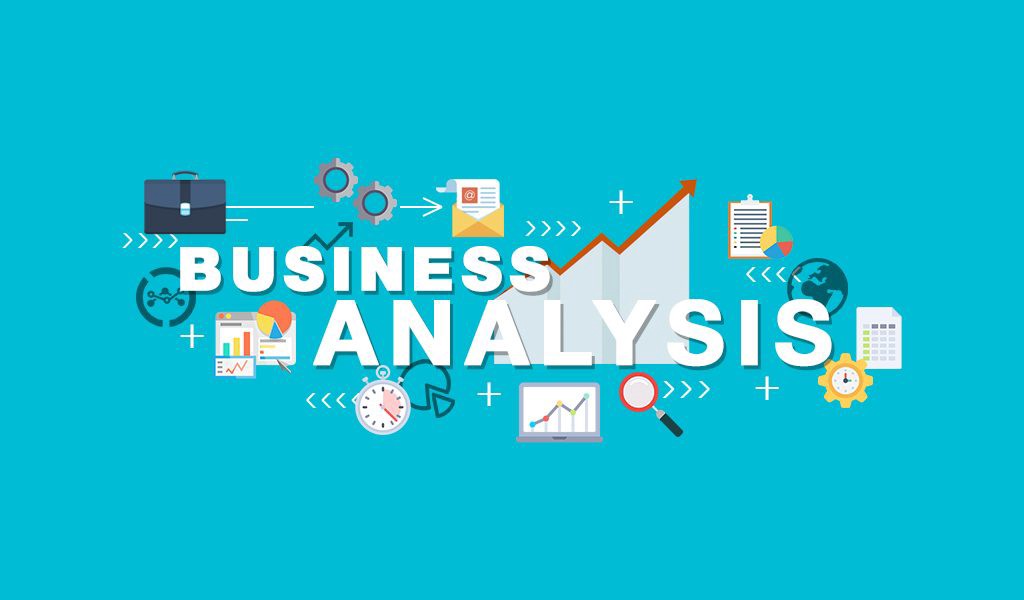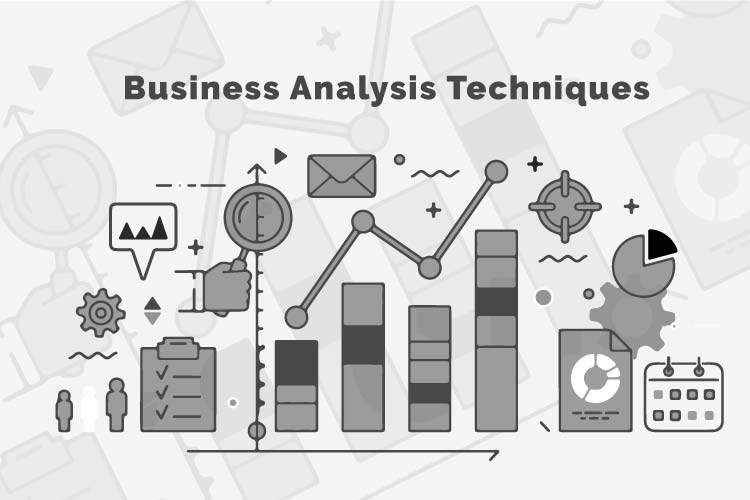Top 20 Business Analysis Methodologies and Techniques
Business analysis methodologies and techniques are essential tools for professionals seeking to understand, improve, and optimize various aspects of an organization’s operations.
These methodologies and techniques empower Business Analysts to gather insights, identify problems, and propose solutions that drive business success.
In this comprehensive guide, we will explore the top 20 business analysis methodologies and techniques that are indispensable for those pursuing a career in this dynamic field.
Additionally, we will highlight how the Digital Business School (DBS) plays a crucial role in coaching career switchers to become proficient Business Analysts or Data Analysts, providing the necessary skills and knowledge to excel in these roles.
Let’s quickly see the descriptions or definitions of each methodology and technique along with the real-life scenarios where they can be applied.
20 List of Business Analysis Methodologies and Techniques

Below are the various top 20 list of business analysis methodology and techniques available today.
1. SWOT Analysis
SWOT (Strengths, Weaknesses, Opportunities, Threats) analysis is a strategic planning tool used to evaluate an organization’s internal strengths and weaknesses, as well as external opportunities and threats.
Scenario: A retail company conducts a SWOT analysis to assess its position in the market.
They identify their strengths, such as a strong brand, weaknesses like outdated technology, opportunities like expanding into new markets, and threats such as increasing competition.
2. PESTLE Analysis
PESTLE (Political, Economic, Social, Technological, Legal, Environmental) analysis is a framework for assessing the external factors affecting a business, providing insights into the broader context in which it operates.
Scenario: An international tech firm conducts a PESTLE analysis to evaluate the political stability, economic conditions, and technological advancements in a new market before launching a product there.
3. Gap Analysis
Gap analysis is a technique that identifies the discrepancy or gap between an organization’s current state and its desired future state, allowing for targeted improvements.
Scenario: A manufacturing company performs gap analysis to identify discrepancies between its current production processes and industry best practices. This helps in pinpointing areas for improvement.
4. Root Cause Analysis
Root cause analysis is a systematic process used to identify the underlying reasons behind a problem or issue, enabling organizations to address the source of the problem rather than just the symptoms.
Scenario: An e-commerce platform experiences a significant drop in sales.
Root cause analysis reveals that the issue is due to a recent website update that caused slow loading times and frustrated customers.
5. Use Case Modelling
Use case modelling is a technique to describe how a system interacts with its users or other systems, providing insights into system functionality.
Scenario: A software development team creates use case models to define how a new mobile app interacts with users, outlining scenarios for user interactions like registration and making a purchase.
6. Business Process Modelling
Business process modelling involves creating visual representations of business processes to analyse, improve, and streamline operations.
Scenario: A financial institution employs business process modelling to visualize and streamline its loan approval process, identifying bottlenecks and inefficiencies.
7. Data Flow Diagrams (DFD)
Data Flow Diagrams (DFDs) visually represent the flow of data within a system, aiding in the analysis of data processing and information flow.
Scenario: A hospital uses DFDs to map the flow of patient data through its electronic health record system, ensuring secure and efficient information handling.
8. Requirements Elicitation
Requirements elicitation is the process of gathering and documenting business requirements from stakeholders using various techniques such as interviews, surveys, and workshops.
Scenario: An insurance company employs interviews and surveys to elicit requirements from stakeholders for a new claims processing system.
9. User Stories
User stories are concise descriptions of system functionality from an end-user perspective, facilitating agile project management.
Scenario: A software development team utilizes user stories in an agile project to describe how a customer can browse and purchase products on an e-commerce website.
10. Use Case Diagrams
Use case diagrams depict system interactions and relationships with external entities, providing a high-level view of system functionality.
Scenario: A transportation company creates use case diagrams to illustrate interactions between users, drivers, and their mobile app for ride booking and tracking.
11. Fishbone Diagram (Ishikawa or Cause-and-Effect Diagram)
The Fishbone Diagram, also known as the Ishikawa or Cause-and-Effect Diagram, helps identify potential causes of a problem by categorizing contributing factors.
Scenario: A manufacturing plant uses a fishbone diagram to identify the root causes of defects in a product, categorizing factors like materials, equipment, and human error.
12. Decision Trees
Decision trees are visual representations of decision-making processes, aiding in analysing potential outcomes and choices.
Scenario: An investment firm employs decision trees to analyse potential investment options, considering factors like risk, return, and market conditions.
13. Benchmarking
Benchmarking involves comparing an organization’s processes, performance, or metrics with industry best practices to identify areas for improvement.
Scenario: An automotive manufacturer benchmarks its production processes against industry leaders to identify areas where it can enhance efficiency and reduce costs.
14. SWOT Matrix
SWOT matrices condense SWOT analysis findings into a matrix format, enabling clearer strategic planning.
Scenario: A marketing team condenses the findings of a SWOT analysis into a matrix to prioritize strategies.
They focus on leveraging strengths to exploit opportunities while addressing weaknesses to mitigate threats.
15. Business Process Reengineering (BPR)
Business Process Reengineering (BPR) focuses on the radical redesign of processes to achieve dramatic improvements in efficiency and effectiveness.
Scenario: A financial institution undergoes BPR to radically redesign its loan approval process, reducing processing time and enhancing customer satisfaction.
16. Kano Model
The Kano Model categorizes customer needs and preferences into essential, performance, and delight factors, guiding product and service development.
Scenario: A software development company applies the Kano Model to categorize customer preferences for new software features into essential, performance, and delight factors, guiding feature prioritization.
17. Cost-Benefit Analysis (CBA)
Cost-Benefit Analysis (CBA) evaluates the potential benefits and costs of a proposed project or solution, helping organizations make informed investment decisions.
Scenario: An energy company conducts a CBA to evaluate whether implementing a renewable energy solution is financially viable compared to traditional energy sources.
18. Agile Methodologies
Agile methodologies, such as Scrum and Kanban, emphasize iterative development, collaboration, and customer feedback for project management.
Scenario: A software development team adopts Scrum methodology to iteratively develop a mobile app, incorporating customer feedback after each sprint.
19. Six Sigma
Six Sigma is a data-driven methodology for process improvement, aiming to reduce defects and variations in processes.
Scenario: A manufacturing company implements Six Sigma principles to reduce defects in its production line, resulting in cost savings and improved product quality.
20. Data Analytics
Data analytics techniques, including data mining and predictive analytics, help organizations extract valuable insights from their data for informed decision-making.
Scenario: An e-commerce platform utilizes data analytics to analyse customer purchase history and recommend personalized products, increasing sales and customer satisfaction.
These methodologies and techniques are versatile tools that Business Analysts can adapt to various scenarios, providing valuable insights and solutions for organizations across different industries.
How Digital Business School (DBS) Supports Career Transition

-
Structured Training Programs:
DBS offers structured and comprehensive training programs specifically tailored to individuals looking to transition into Business Analyst or Data Analyst roles.
These programs are designed to provide a strong foundation in the essential methodologies, techniques, and tools required in the field of business analysis.
-
Interactive Learning Experiences:
DBS’s approach to education emphasizes interactive learning experiences that go beyond passive content consumption.
Students actively engage with course materials and instructors, allowing them to apply what they learn to real-world scenarios, thus gaining practical skills.
-
Experienced Instructors:
DBS prides itself on its faculty of experienced instructors who are industry experts and professionals in their respective fields.
These instructors not only impart theoretical knowledge but also provide valuable insights and mentorship throughout the learning journey.
-
Comprehensive Career Support:
DBS understands that transitioning into a new career can be challenging, which is why it goes beyond training to offer comprehensive career support.
Career support services include assistance with resume building, interview preparation, and connecting students with job opportunities in the Business Analyst and Data Analyst fields.
-
Flexible Learning Options:
Recognizing that career switchers come from diverse backgrounds, DBS offers flexible learning options to accommodate various learning styles and schedules.
Whether you are starting your career from scratch or looking to validate your existing skills, DBS provides customized pathways to meet your unique needs.
-
Hands-On Projects:
DBS integrates practical experience into its curriculum through hands-on projects that mirror the challenges and complexities faced by professionals in the Business Analyst and Data Analyst roles.
These projects allow students to apply their knowledge in real-world situations, enhancing their readiness for the job market.
-
Networking Opportunities:
DBS fosters a vibrant learning community that encourages networking and collaboration among students.
Through various events, workshops, and forums, students can connect with peers, industry professionals, and potential employers, expanding their professional network.
-
Continuous Learning and Updates:
DBS is committed to staying up-to-date with the latest developments in the fields of business analysis and data analysis.
The institution regularly updates its curriculum to reflect industry trends and emerging methodologies and techniques, ensuring that students receive the most relevant and current education.
Conclusion
In summary, DBS provides a holistic and supportive environment for individuals seeking to transition into the roles of Business Analysts or Data Analysts.
Through structured programs, interactive learning, experienced instructors, career support, and flexible options;
DBS equips career switchers with the knowledge and skills needed to succeed in these dynamic fields.
With practical experience, networking opportunities, and a commitment to continuous learning;
DBS ensures that students are well-prepared to excel in the world of business analysis methodologies and techniques, making a seamless transition into their new careers.









